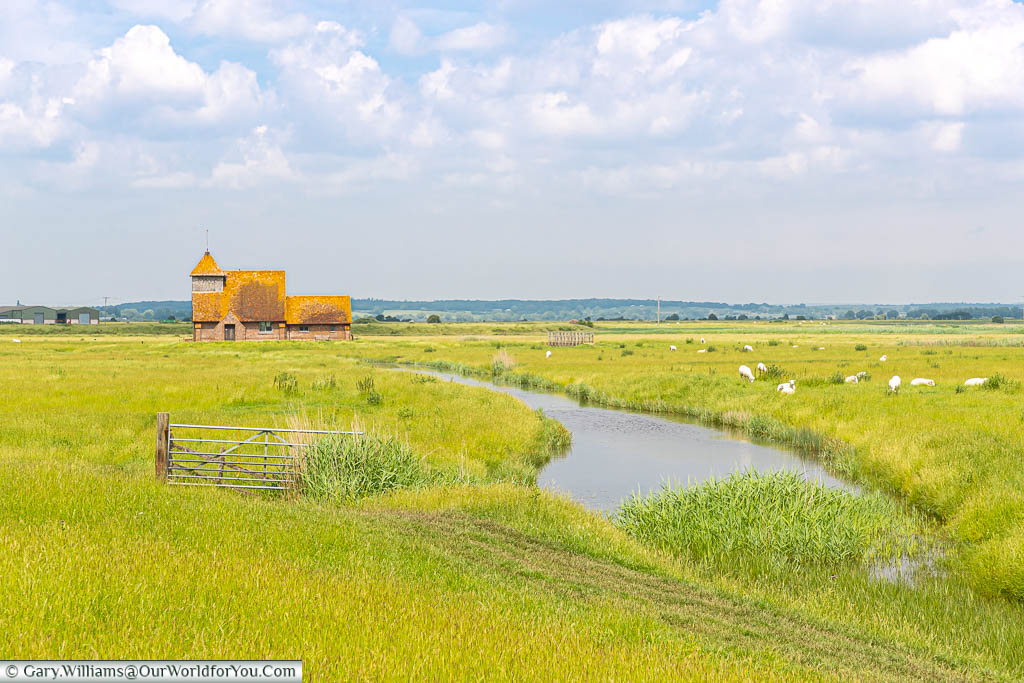Discover the detached belfry of Brookland
Hopefully, you’ve caught up with my first post on Discovering the Medieval churches of Romney Marsh. I wanted to ensure that I captured all of the 14 ancient Romney Marsh churches and did justice to them all. So, I have chosen to split the article into two.
There are so many tales to be told throughout Romney Marsh in Kent. So often, the historic churches and their graveyards hold many secrets and fascinating stories, from old smuggler’s yarns to local heroes.
I love visiting Romney Marsh; the landscape captivates me, whether it’s winter or summer. The endless sparse salt marshes, the sheep grazing amongst the wetlands and the remote villages are lost to time and tide.
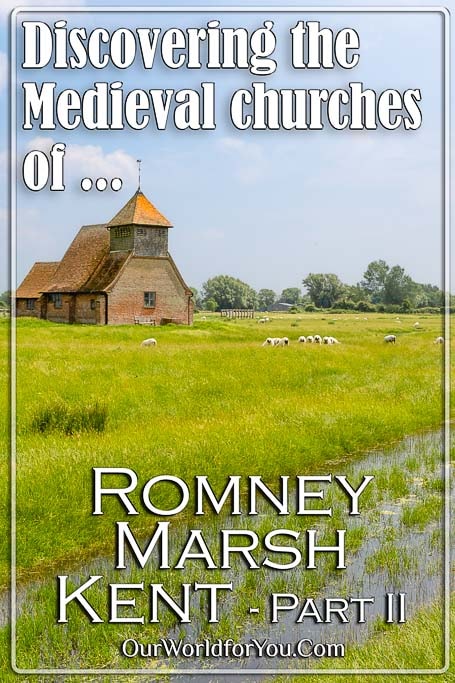
You can pick up this route anywhere you wish and just visit a few of the medieval churches; however, if you have the time follow along with us and visit all 14 of them. Each and every one is unique and has its own quirky features.
As I mentioned in my first post, some churches have timed openings, often from 10am. In some churches, you need to obtain the key from a local resident, and one or two may be locked.
So, let’s sit back, relax, venture off on a journey of historical sightseeing and explore the final seven Romney Marsh Historic Churches.
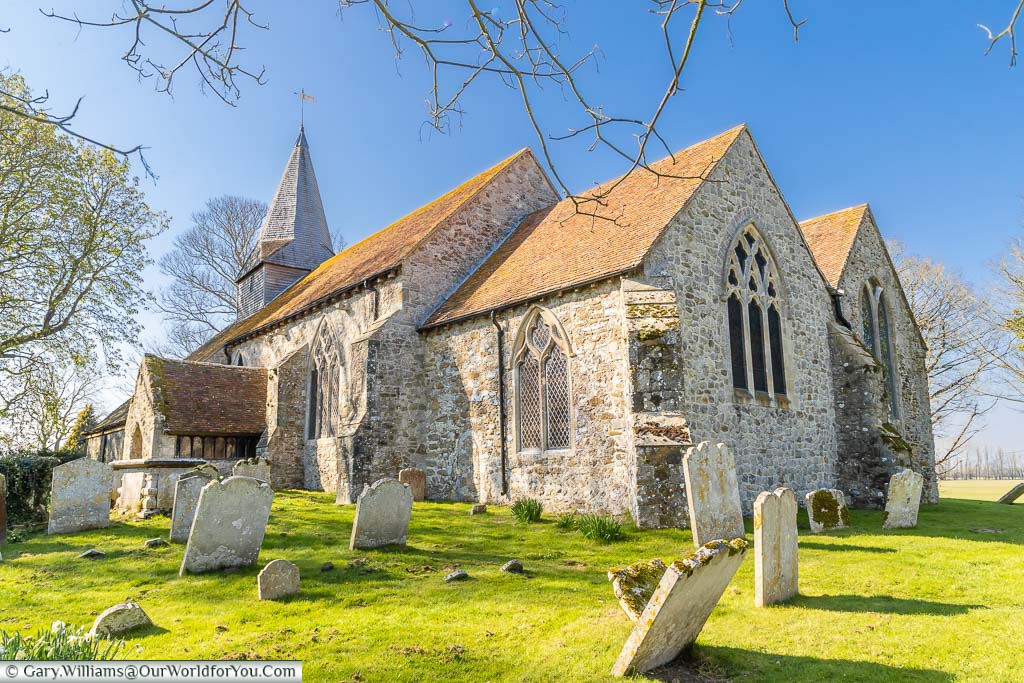
Where are the 14 Medieval churches of Romney Marsh?
Need a car?
St. Thomas Becket, Fairfield
Iconic view of Romney MarshOur first stop in the second part of this Romney Marsh church adventure is at St. Thomas Becket Church in Fairfield. It is quite iconic to the marshlands and one of the most photographed churches in Romney Marsh.
St. Thomas Becket Church in the hamlet of Fairfield was originally built of timber around AD 1200; the temporary structure was for the local farmers as a place of worship. The wooden church survived until the 18th-century, when the exterior brick walls were added. Although the church has endured the test of time, the village of Fairfield has long since disappeared.
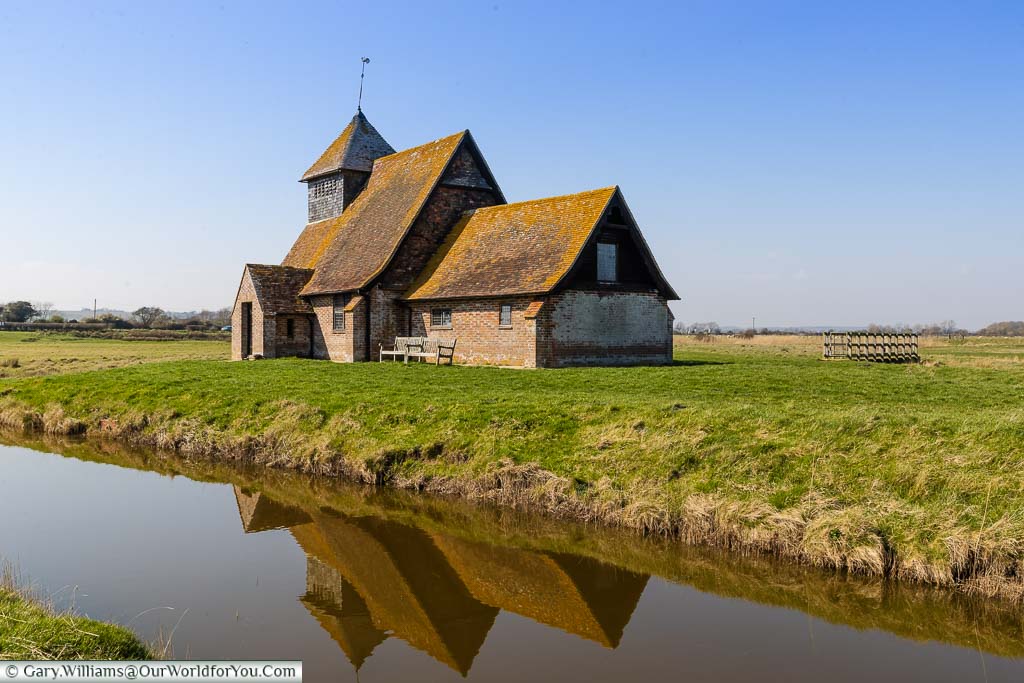
This area of Romney Marsh often became flooded in the winter months. Until the 1960s, this regularly made St. Thomas Becket Church accessible only by boat. You can now visit by strolling across the wetlands; however, sensible footwear is advisable.
In 1912 the church was in danger of collapse and declared insecure. The church was dismantled, the foundations were made safe, and St. Thomas Becket Church was reconstructed using original materials.
The church almost looks surreal as it is so secluded from any other surrounding buildings. Like many other Romney Marsh churches, it was built on a mound to prevent it from flooding. Due to its positioning by the nearby dykes the water levels fluctuated. Consequently, there are no gravestones in the churchyard and no evidence of burials.
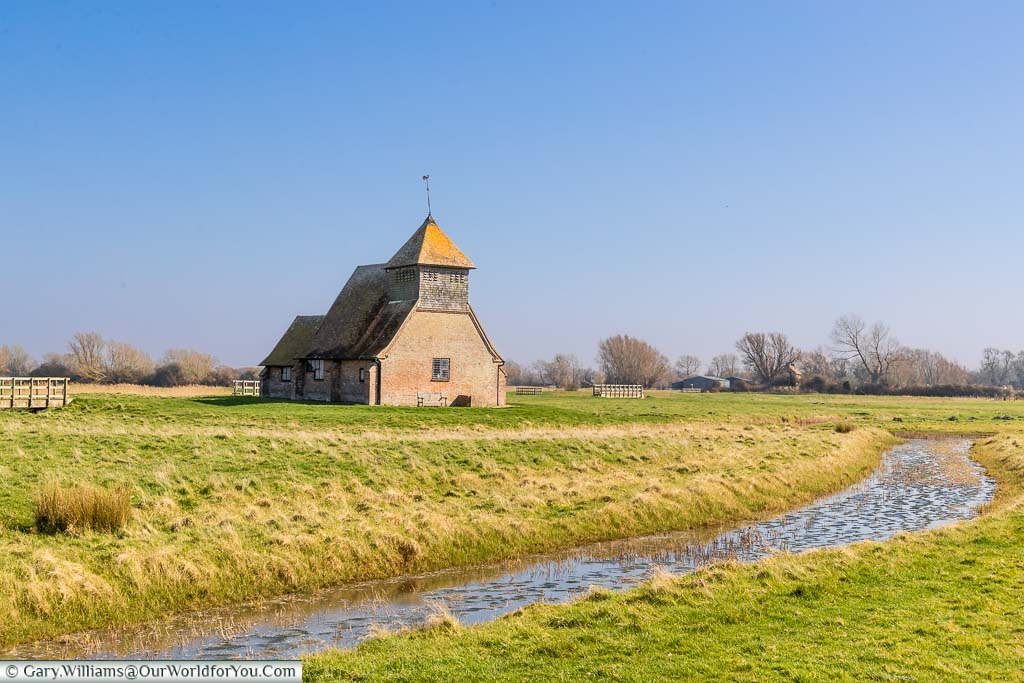
St. Thomas Becket Church is often locked; however, the key can be obtained from a nearby resident.
Inside the nave are some rare features, one of which is the triple-decker pulpit and box pews. Box pews can be seen at a few Romney Marsh churches and are quite unusual nowadays. However, these are even more unusual as they are white.
The pews would have been rented out to local parishioners, and their social standing was reflected in where they sat.
St. Augustine, Brookland
13th-century detached belfryOur next stop is to the very unusual church of St Augustine’s in the village of Brookland.
It isn’t too difficult to see the extraordinary and rare feature of St Augustine’s Church, as the detached wooden bell tower sits beside the church and not upon it.
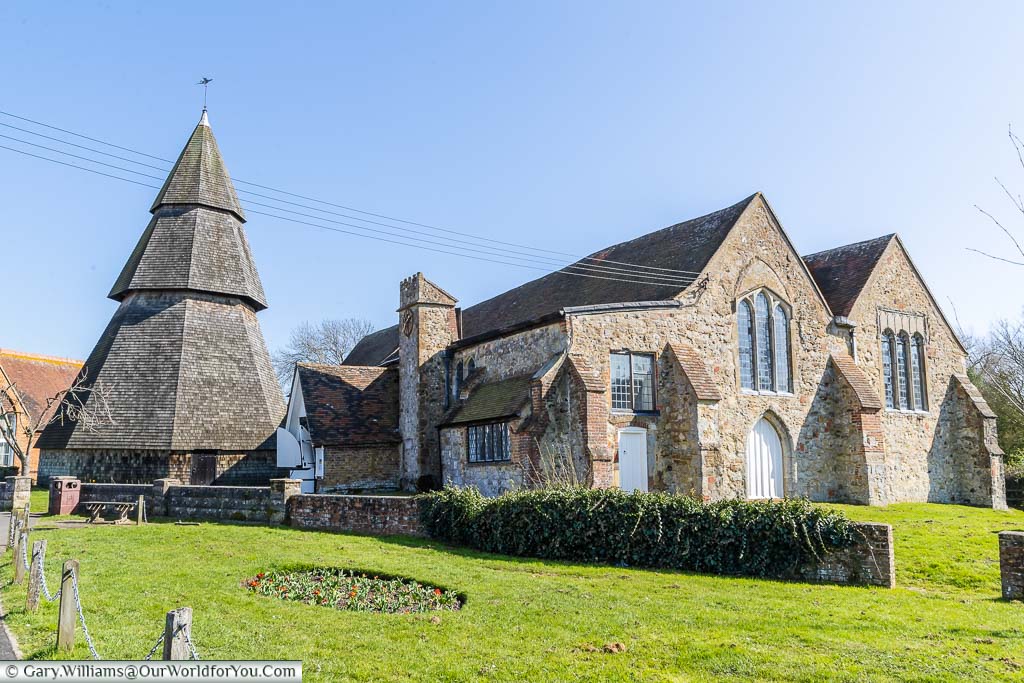
The separate octagonal belfry is one of only five structures to exist like this in England. The tower was built in the late 13th-century at around 30ft; it was then doubled in height in the 15th-century. There is evidence that the bell tower was once an open structure, and the bells were exposed.
Like many churches constructed on Romney Marsh, St Augustine’s Church was built on mounds to ensure they escaped the threat of flooding. Due to the instability of the ground, it is believed that it was safer to erect the bell tower next to the church.
The church is reasonably large and would have served a sizeable community. Wandering into St Augustine’s, you immediately notice the tall box pews. The Georgian box pews are the highest box pews on the Marsh and were originally painted white
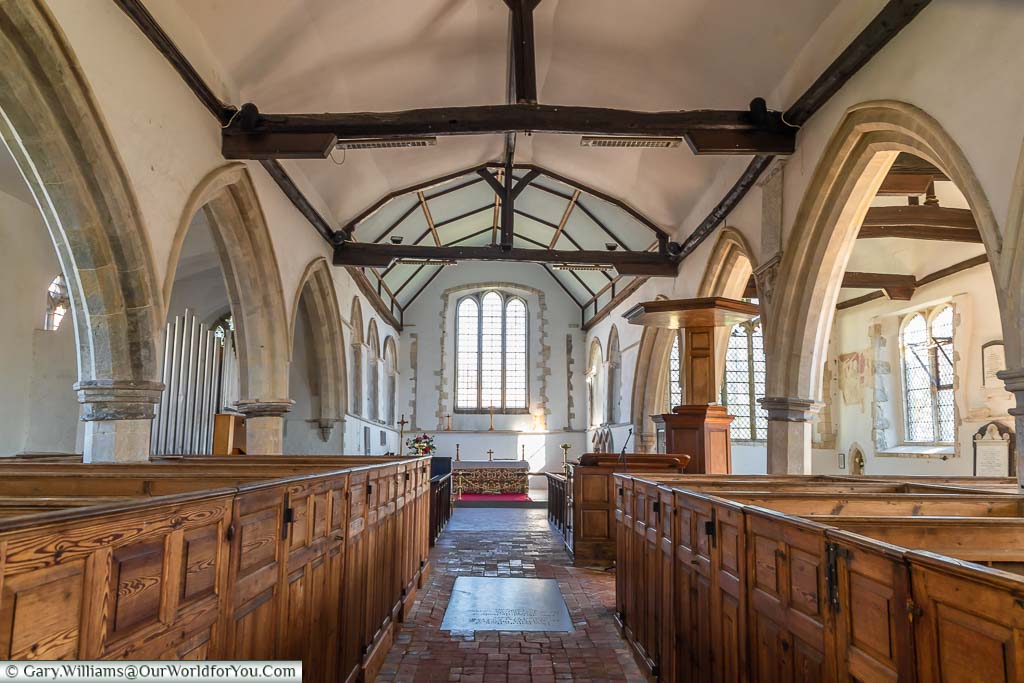
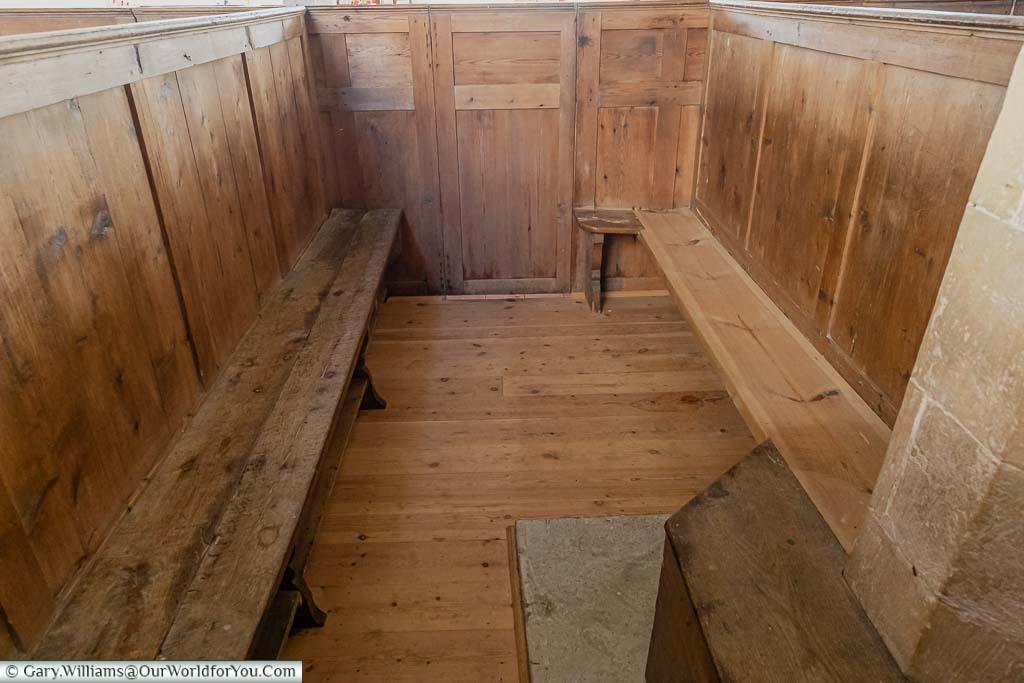
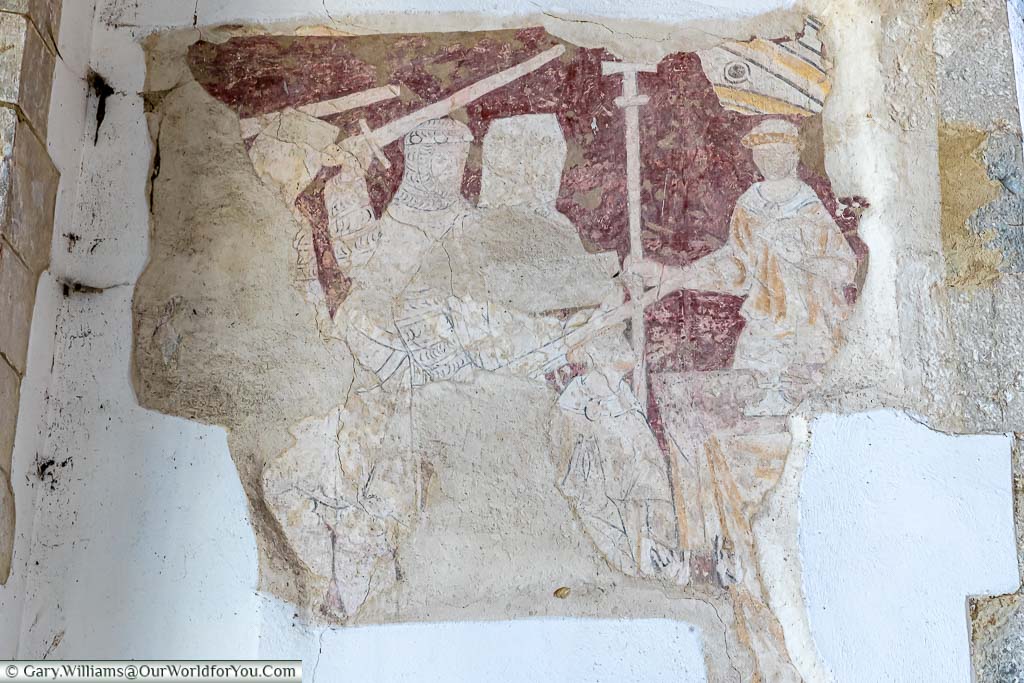
A medieval wall painting was discovered in 1964, which depicts the murder of Thomas Becket in 1170.
The village of Brookland inspired Rudyard Kipling to write his poem “Brookland Road”. If you’re a fan of Rudyard Kipling, we can highly recommend visiting his family home Bateman’s, in nearby East Sussex.
Where to stay on Romney Marsh
- Romney Bay House Hotel – This charming hotel is located along a private stretch of the Romney Marsh coastline. Offering sea views, free parking and an on-site restaurant.
Where to stay in Hythe
St. Dunstan, Snargate
16th-century Great Ship muralSt. Dunstan Church is located in the hamlet of Snargate and like many churches on Romney Marsh was built on an artificial mound.
When you visit, you’ll be surprised at how large the ancient church is in comparison to the hamlet it serves.
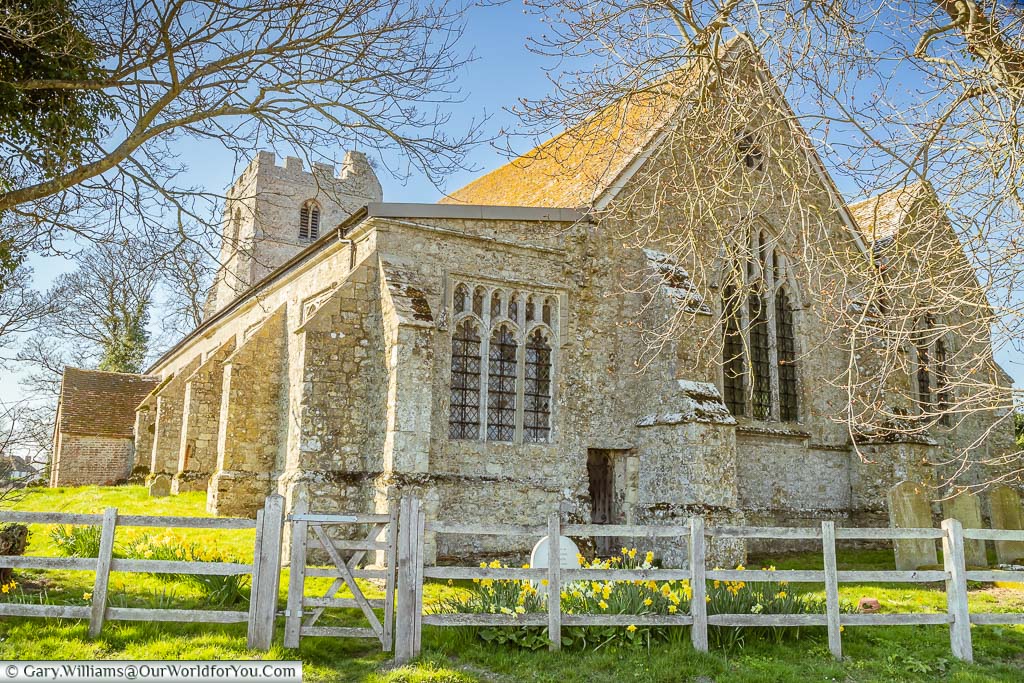
The medieval church of St. Dunstan was built in c. 1200 and would have been considerably smaller when first erected. Reasonably quickly, the north and south aisles were added, and in the 14th-century, the east end of the church was created.
The bell tower at St Dunstan dates from around 1400. However, one of the three bells rung within the church predates the tower by two hundred years and is inscribed “Ave Maria”.
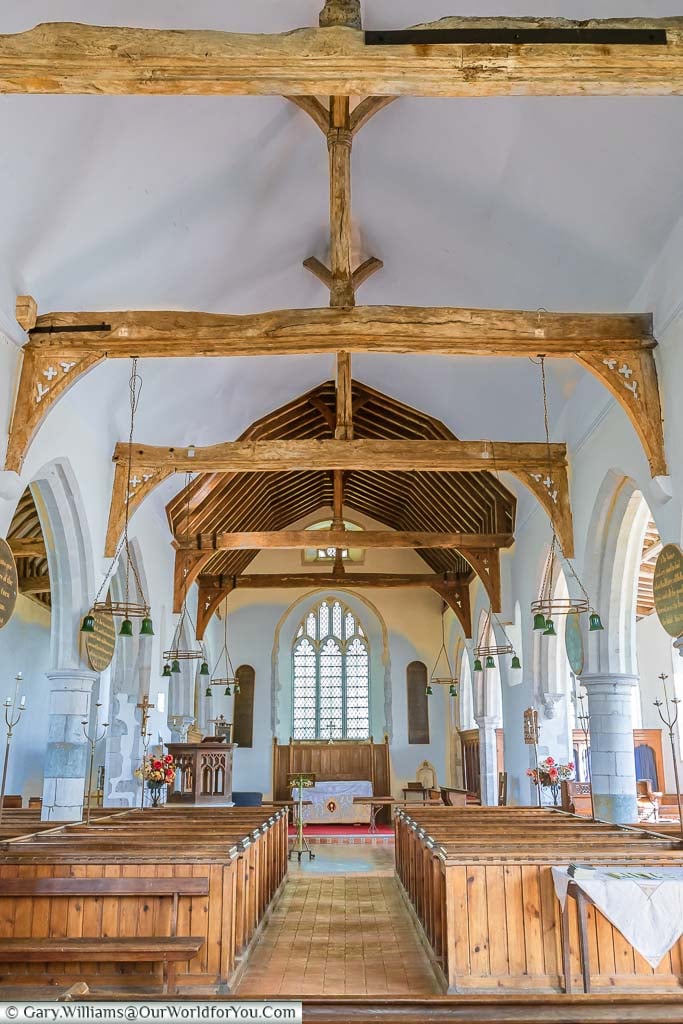
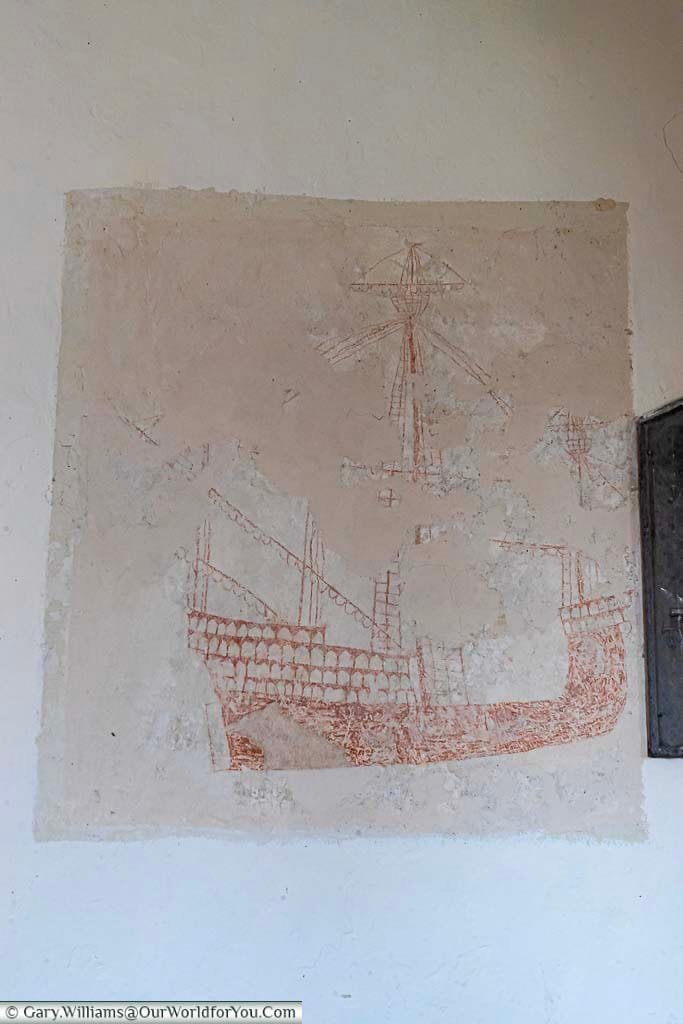
If you're intrigued by Kent's weird and wonderful history, or all unusual stories around the county, then take a peek at "Kent's Strangest Tales".
You won't be able to put it down, you can pick it up for your Kindle or in good old paperback.
St. Eanswith, Brenzett
A tranquil retreat on the MarshSt. Eanswith Church in Brenzett is a little tricky to find. It is along a narrow, unpaved track; however, there are a couple of parking spaces, so it is accessible.
This charming church is one of the smallest on the Marsh, and the village of Brensete (Brenzett) is mentioned in the Domesday Book of 1086. The church is dedicated to Saint Eanswith, the granddaughter of King Ethelbert of Kent.
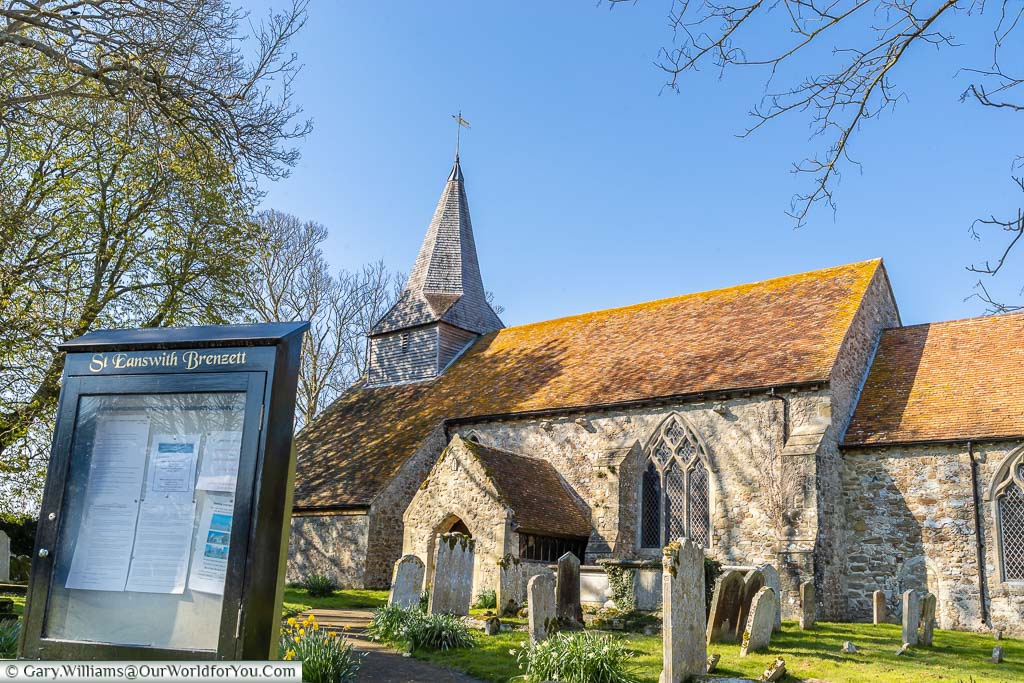
St. Eanswith Church was built in the late 12th-century. However, significant restoration work took place at the end of the 19th-century, and many of the original features were removed.
The north aisle was added around 1220 is accommodate the expanding congregation. The construction of the south aisle was never completed due to the outbreak of The Black Death in 1348. Once the plague started to pass in 1394, the spire was added to St. Eanswith Church.
The church feels quite rudimentary in places, particularly at the tower’s base, where six large beams support the oak-shingled spire. You’ll also see the ropes hanging down from the three church bells.
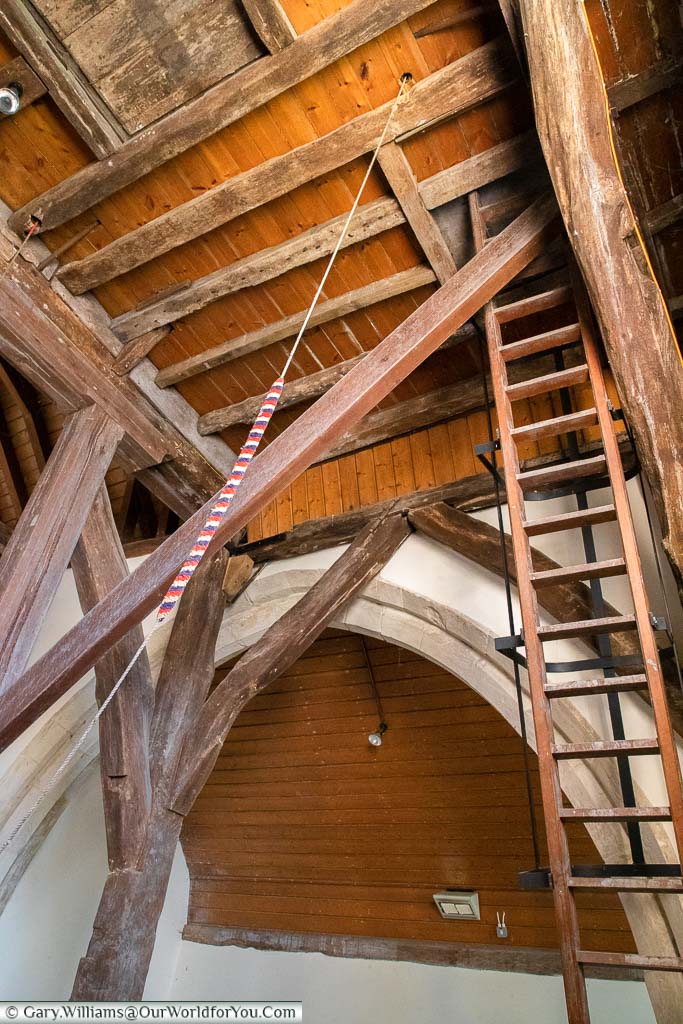
Within the church is the tomb of John Fagge and his son, who died during the reign of King Charles I. The tomb was the inspiration behind Edith Nesbit’s novel the Man-size in Marble, written in 1893, 10 years before she wrote her famous book The Railway Children.
Edith is buried at St. Mary the Virgin Church at St Mary in the Marsh, another of the Romney Marsh Medieval Churches.
Escape for a few days
Are you looking for that ‘perfick’ holiday hideaway to relax in while you discover the Garden of England?
After a day exploring the Kent coast and its many historic castles enjoy one of the handpicked properties and unique retreats at Holiday Cottages.
St. Augustine, Snave
Strolling the avenue of daffodilsOur next stop is to St. Augustine Church in the hamlet of Snave. St Augustine is located at the end of a track, and the most beautiful time to visit is when the spring daffodils are in full bloom.
As you approach the small church on foot, it is like strolling through an avenue of daffodils, it isn’t surprising it is known locally as the Daffodil Church.
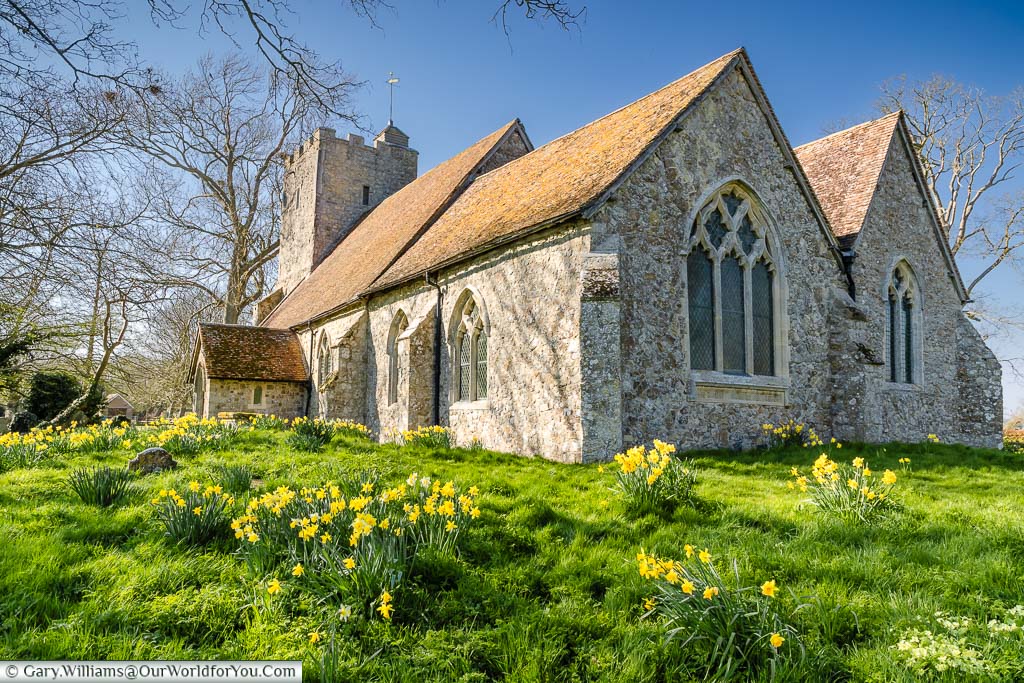
The earliest record of a church on this site is in 1219, although the present church of St Augustine on Romney Marsh was built in the 13th-century. The upper part of the tower was added in the late 15th-century and has a beacon turret.
Due to the frequently flooding wetlands around Romney Marsh, this historic church had 14 buttresses built around the base to stop any subsidence.
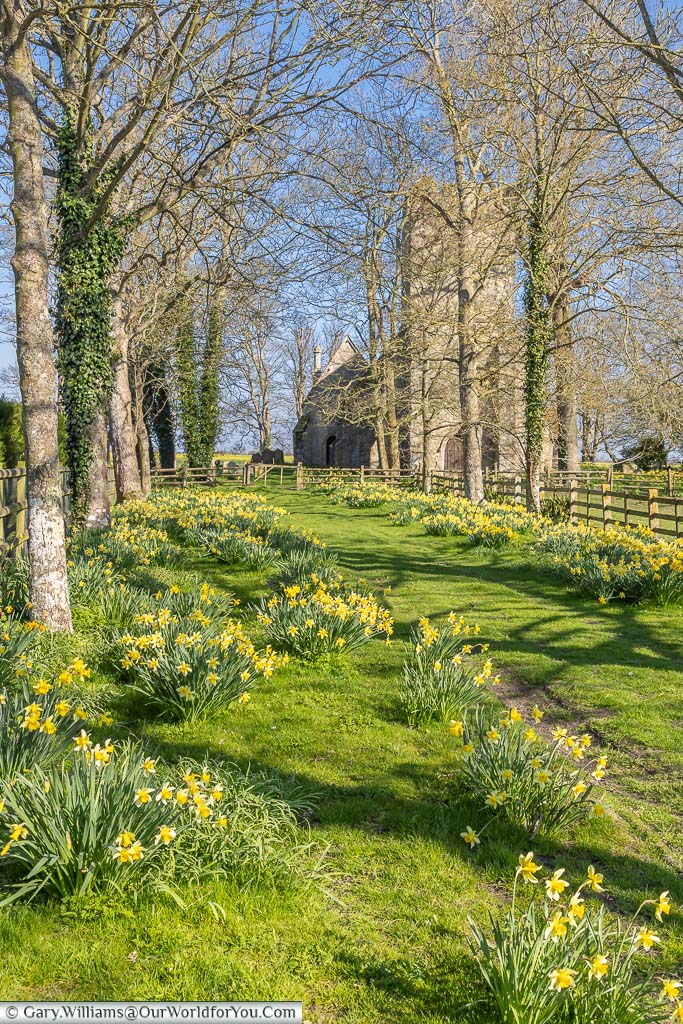
St Augustine Church was declared redundant in 1983; St Augustine is now entirely maintained by the Romney Marsh Historic Churches Trust.
Unfortunately, when we visited the church, it was locked. Hence, we were unable to see the inside of the beautiful church.
Map, guides and more
If you fancy discovering the surrounding footpaths and bridleways around Romney Marsh, head to the Ordnance Survey website. The local OS Map covering the region is no. 125, ‘Romney Marsh, Rye and Winchelsea’.
Alternatively, why not purchase and download the OS Maps App, which covers all of Great Britain.
St. George, Ivychurch
A Priest room and smugglersSt. George’s Church in Ivychurch was built under the patronage of the Archbishop of Canterbury and is far larger than the congregation it has ever served. The church can be seen for miles around.
St. George parish church measures 133ft (40.5m) in length and is known as the “Cathedral of Romney Marsh”. I’m sure there must be some dispute with All Saints at Lydd as their church is also known as the Cathedral of the Marsh.
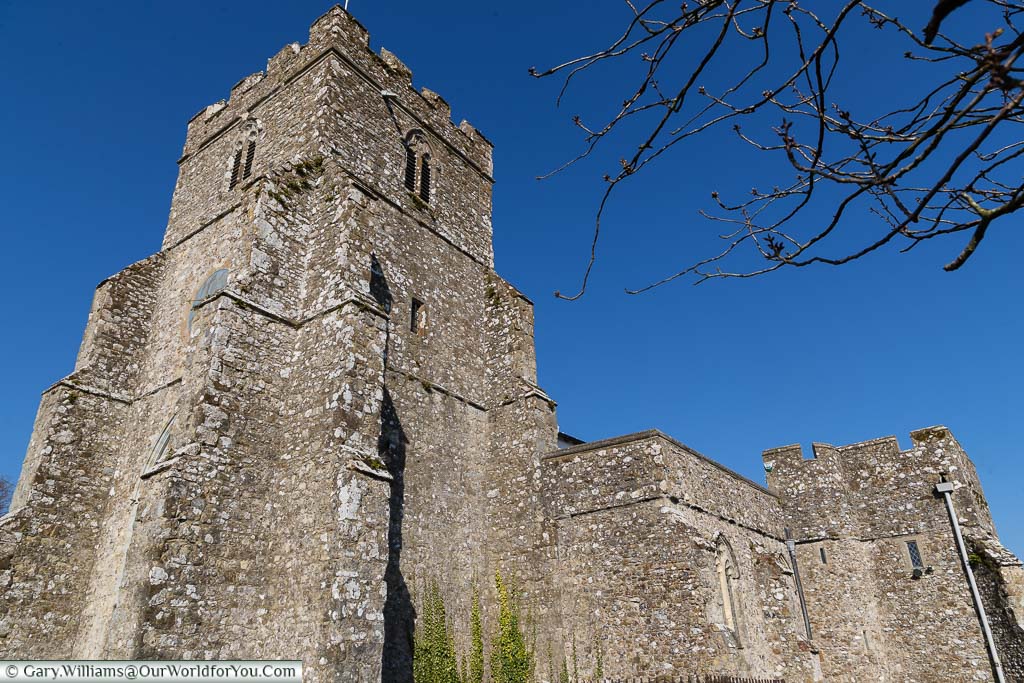
The present Church of St George was essentially built during the 14th-century when it was vastly extended. However, there are records of Rectors dating from the late 13th-century. The battlement tower with its beacon turret stands 68ft (28m) high.
The eye-catching vaulted porch was once used as a school with low stone seats around the edge. It was one of the earliest schools in the district, and the local priest would have been their schoolmaster.
Above the porch is a tiny priest’s room known as a parvis chamber. It housed travelling priests and where the church’s treasures may have been kept. During WWII, the parvis room was used to store emergency food rations.
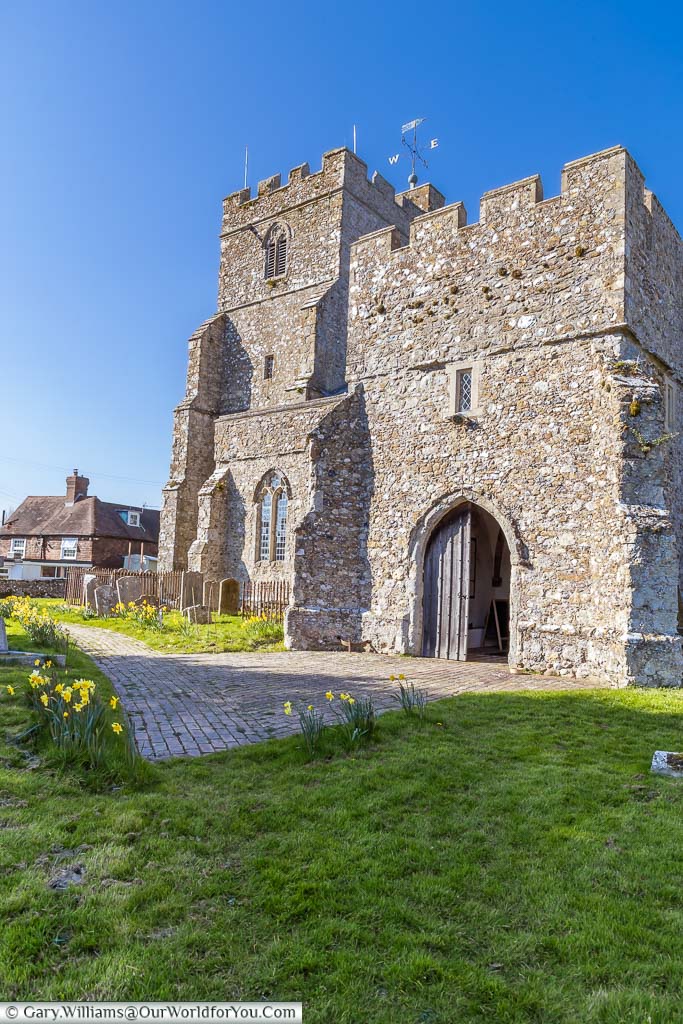
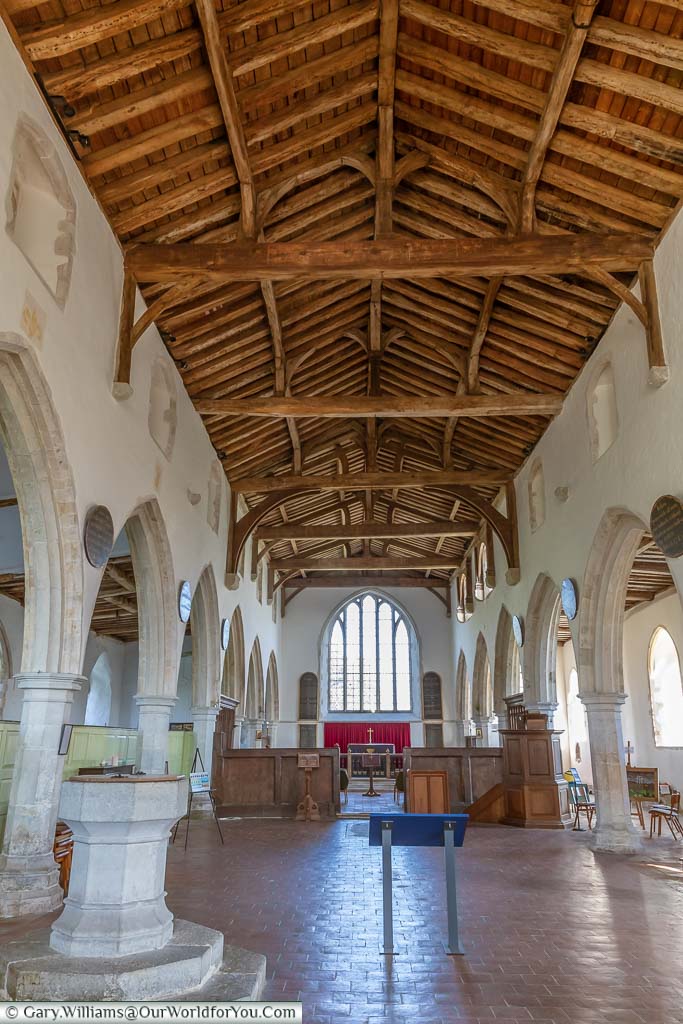
As you step inside the church, the wooden vaulted roof stretches the entire length of the large church. St George’s would have once had several chapels within it; today, only two remain. Along the restored north aisle is a museum dedicated to rural life and displays a collection from a former local farmer.
There are many tales of the village of Ivychurch, and St. George’s church being associated with smugglers. Legend has it that, at times, services could not be held because of the amount of contraband stored in the church and in the vaults below the church.
The local pub, the Bell Inn, is directly next to the church, and it is believed that smugglers' tunnels are said to connect the church and the local pub.
St. Peter and St. Paul, Newchurch
Visit Romney Marshes leaning towerOur fourteenth and final stop on our tour of the Medieval Churches of Romney Marsh is to St. Peter and St. Paul in Newchurch. This tiny village is mentioned in the Domesday Book of 1086 and suggests that there may have been a Saxon church on the site prior to the current early 13th-century church.
Like many of the historic churches on Romney Marsh, St. Peter and St. Paul were extended in the 14th-century and prone to subsidence.
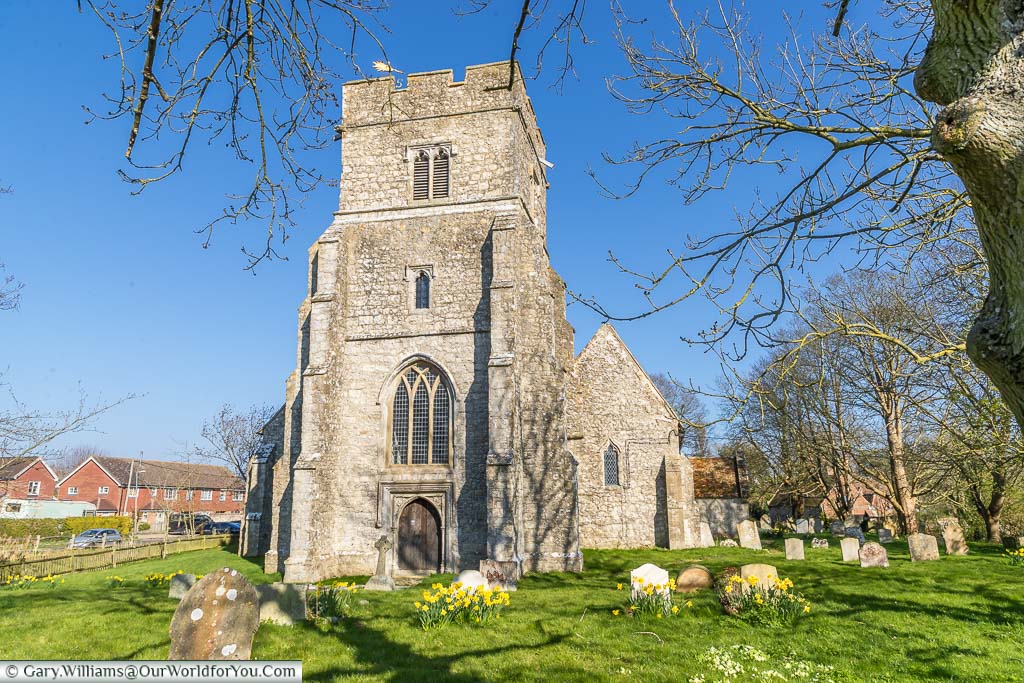
A distinctive feature of St. Peter and St. Paul is that its Kentish Ragstone tower is leaning. The bottom section was erected in 1410, and once the second level was added, it began to subside. The tower was heavily buttressed and left until 1480 until the final belfry level was added in an upright position.
The inside of St. Peter and St. Paul Church is exceptionally large, with a north and south chapel. The south chapel is used for sermons, and the north chapel now houses, and captivating little museum dedicated to the history of Newchurch.
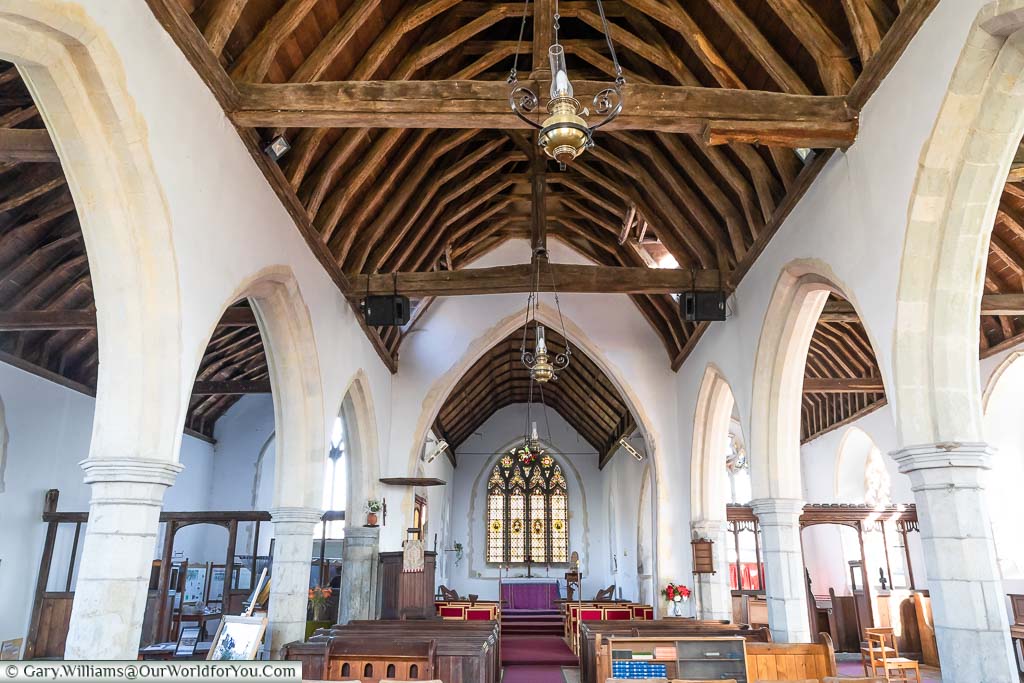
The grand church is also used for day to day use within the community, enjoying coffee mornings and local functions.
If you’ve loved discovering the Romney Marsh Historic Churches and the fascinating landscape, then take a peek at our Romney Marsh road trip itinerary.
* This post may contain links to affiliated sites where we earn a small commission at no additional charge to you.

